Friday, 30th June 2023
Introduction
We analysed the Welsh council tax data between 2016-17 and 2021-22 to focus on the increasing rates of outstanding council tax balances over the years.
Our analysis also focused on the rate at which the contribution made by the council tax in the total budget requirement has changed over this period and if this has followed the same trend as the rate of change of the outstanding council tax balances.
Furthermore, we also analysed the impact of the 2022 inflation rate in the future council tax arrears and use of regression analysis to predict the future rate.
Year-on-year changes in the rate of outstanding council tax balances in Wales
Increasing trend in outstanding council tax balances over the years
Over the years, the outstanding balances in Council tax have followed an increasing trend. 2020 has seen a drastic year-on-year increase in the outstanding balances in Wales. The highest increase is seen in 2021, an increase of 35%.
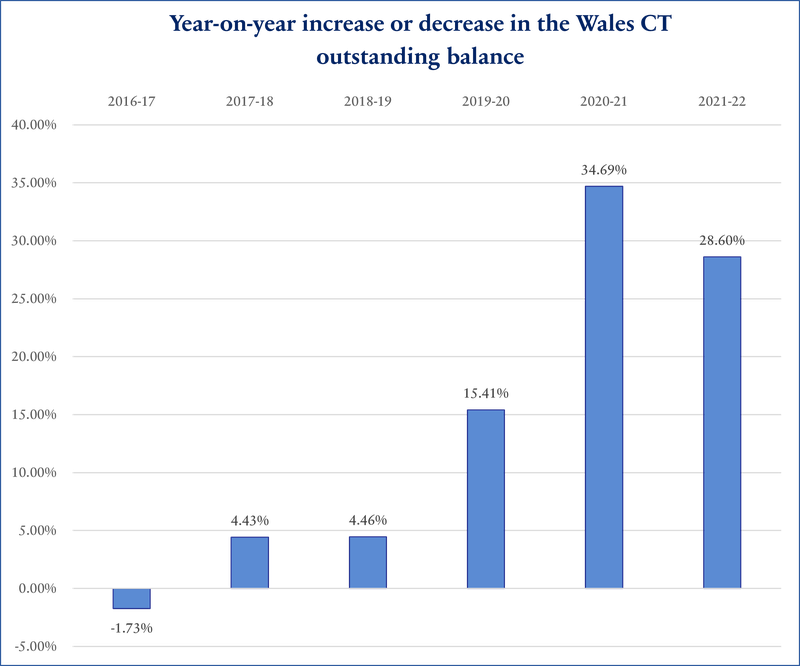
Reliance on council tax in the total budget requirement
Steady increase in the reliance on council tax in the total budget requirement
The amount to be collected from Council tax in the total budget requirement had a steady increase of approx. 2% over the years. However, the outstanding balances in council tax had a sharp increase since 2019-20. This implies that although the reliance on council tax hasn’t increased much, it is the people’s ability to pay which is of growing concern.
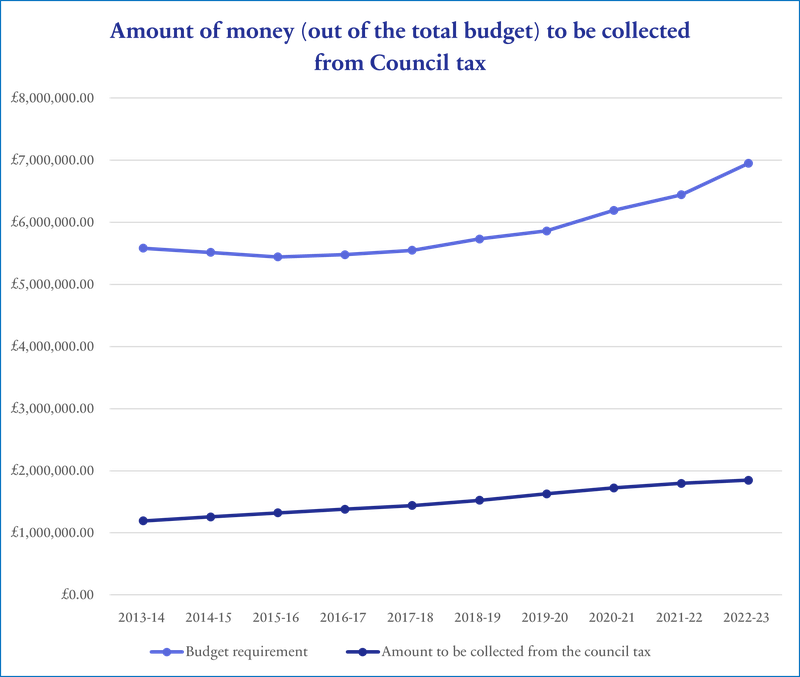
Council tax arrears and council tax bills
Rate of increase in outstanding council tax balances is outpaces council tax billings
Year-on-year comparison shows that the Council tax bills have only increased by approx. 2% since 2017-18. Since 2019-20, despite the fall in the Council tax bills, the outstanding balances continue to follow a dramatic increase in the same time period.
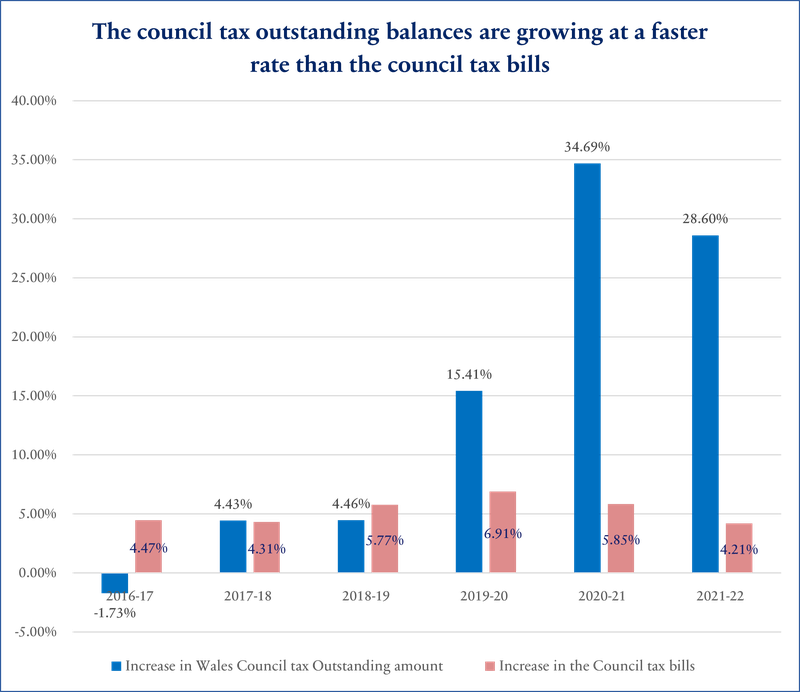
Insights
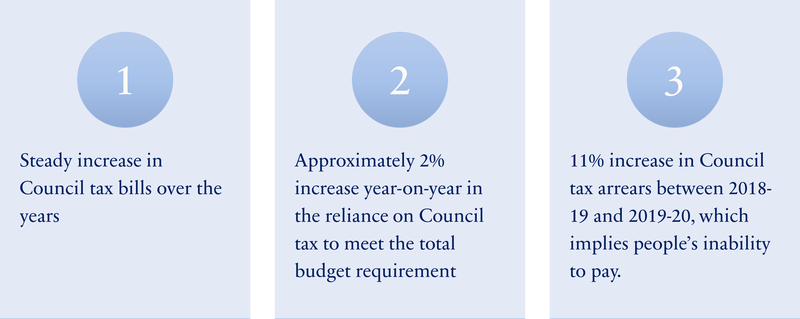
Forecasting the impact of current economic crisis on the outstanding council tax balances
Forecasted year-on-year increase of 16% in the council tax outstanding balances based on the current economic crisis
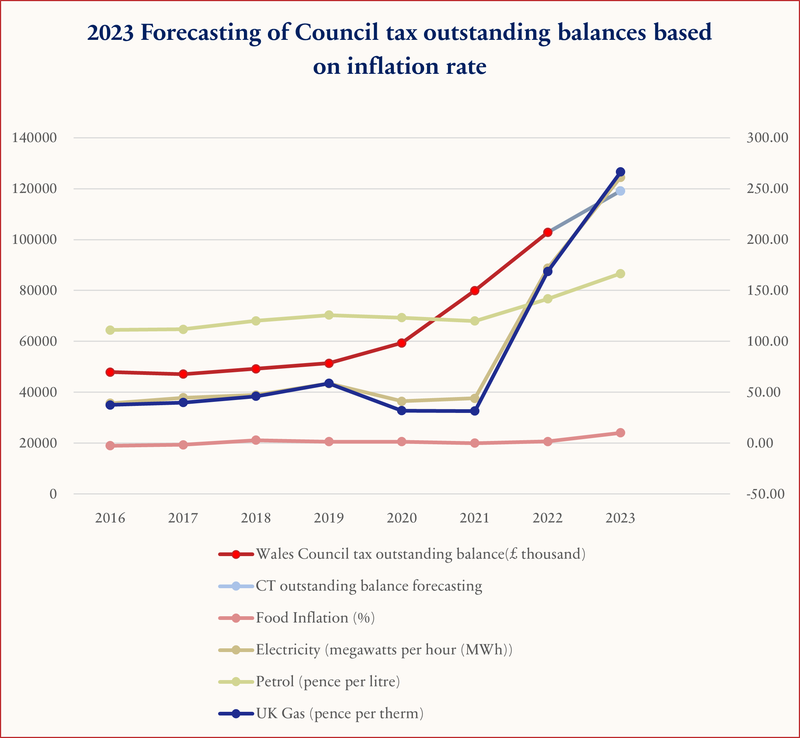
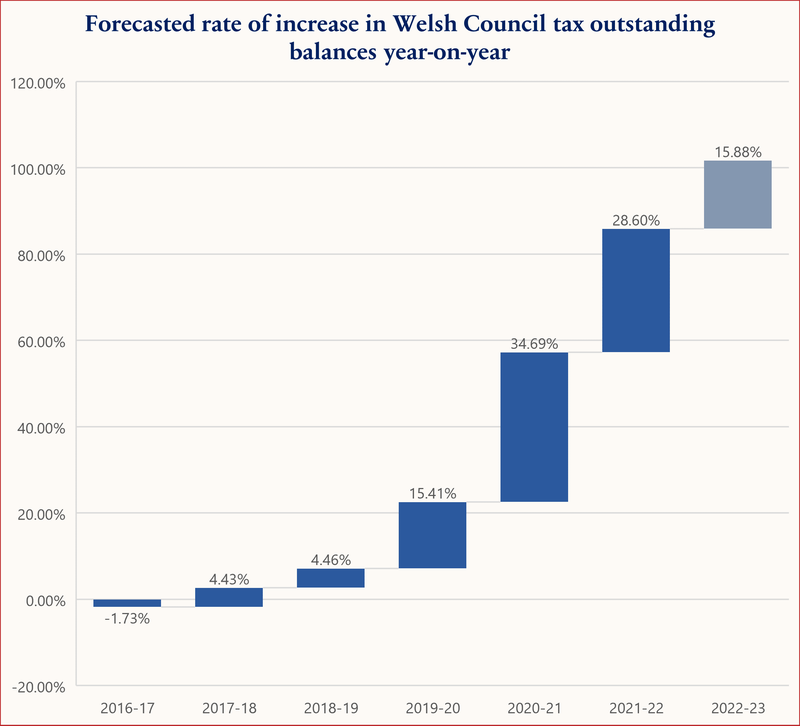
Summary
Our analysis shows the dramatic increase in the rate of outstanding council tax balances over the years. There has been a minimal steady increase in the rate of contribution made by council tax in the budget requirement in the same time period. The rate of increase in council tax arrears is higher than the rate of increase in council tax bills, which emphasises on people’s struggles to pay. Furthermore, using regression analysis, we have forecasted the impact of the current ‘cost-of-living’ crisis on the outstanding council tax balances for 2023.
All the above insights have been derived by using datasets from StatsWales website which is a open source of Welsh local government data. With UK's Digital Strategy, there couldn’t have been a better time to utilise the amount of data the local governments possess.
At Registry Trust, we believe in sharing public data for public good. Registry Trust has the resources to assist the local authorities in the analysis of their historical as well as present data to reveal patterns which will create the foundation for future analysis and hence, support local authorities in the delivery of their services.
“Registry Trust turns data into information and information into insight.”
Forecasting Method
All the insights have been derived by using datasets from StatsWales website which is a open source of Welsh local government data.
Our forecasting is based on the insights from the historical data which shows that people’s inability to pay the council tax is one of the main factors for the outstanding council tax balances. Hence, if people were already financially vulnerable, the current cost of living crisis will just add fuel to the fire.
The forecasting of the outstanding Council tax arrears has been done using the forecasted inflation rate for 2022-23. The inflation rate has been broken down into:
Food inflation, electricity (megawatts per hour), petrol (pence per litre), UK gas(pence per therm). The correlation between the outstanding Council tax balances and the inflation rate is 0.5, which implies a moderate positive correlation and indicates the possibility that increasing inflation rates have led to increased outstanding balances.
Using regression analysis, we predicted that year-on-year, there might be 16% increase in the outstanding council tax balances in 2023 in Wales, if the economic crisis continues in the UK.